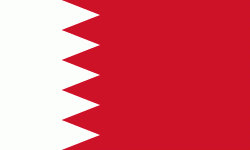Beit Al Quran (Beit Al Quran)
Beit Al Qur'an (بيت القرآن, meaning: the House of Qur'an) is a multi-purpose complex dedicated to the Islamic arts and is located in Hoora, Bahrain. Established in 1990, the complex is most famous for its Islamic museum, which has been acknowledged as being one of the most renowned Islamic museums in the world.
Construction of the complex began in 1984 and the museum was officially opened in March 1990 by Abdul Latif Jassim Kanoo. It was built to "accommodate a comprehensive and valuable collection of the Qur'an and other rare manuscripts", a concept which, according to a regional magazine, is unique in the Persian Gulf region. The core of the museum's holdings is Kanoo's own collection of Qur'anic manuscripts and Islamic art, since he was reportedly said to have been an avid collector. As his collection grew, he reportedly came to feel a strong sense of responsibility toward the rare manuscripts he had acquired. In 1990, he donated his collection to the museum he established to operate a first-of-its-kind institution dedicated to the service of the Qur'an and the preservation of historic manuscripts.
The establishment of the institute was funded completely by public donations, with added help from a variety of people from all walks of life in Bahrain, ranging from heads of state to school children. The facilities at Beit Al Qur'an are free to the general public.
The institution and its museum house an internationally celebrated collection of historic Quranic manuscripts from various parts of the Islamic world, from China in the East and to Spain in the West, representing a progression of calligraphic traditions from the first Hijri century (622–722 AD) and of the Islamic Golden Age, to the present day.
Construction of the complex began in 1984 and the museum was officially opened in March 1990 by Abdul Latif Jassim Kanoo. It was built to "accommodate a comprehensive and valuable collection of the Qur'an and other rare manuscripts", a concept which, according to a regional magazine, is unique in the Persian Gulf region. The core of the museum's holdings is Kanoo's own collection of Qur'anic manuscripts and Islamic art, since he was reportedly said to have been an avid collector. As his collection grew, he reportedly came to feel a strong sense of responsibility toward the rare manuscripts he had acquired. In 1990, he donated his collection to the museum he established to operate a first-of-its-kind institution dedicated to the service of the Qur'an and the preservation of historic manuscripts.
The establishment of the institute was funded completely by public donations, with added help from a variety of people from all walks of life in Bahrain, ranging from heads of state to school children. The facilities at Beit Al Qur'an are free to the general public.
The institution and its museum house an internationally celebrated collection of historic Quranic manuscripts from various parts of the Islamic world, from China in the East and to Spain in the West, representing a progression of calligraphic traditions from the first Hijri century (622–722 AD) and of the Islamic Golden Age, to the present day.
Map - Beit Al Quran (Beit Al Quran)
Map
Country - Bahrain
 |
 |
| Flag of Bahrain | |
Bahrain is the site of the ancient Dilmun civilization. It has been famed since antiquity for its pearl fisheries, which were considered the best in the world into the 19th century. Bahrain was one of the earliest areas to be influenced by Islam, during the lifetime of Muhammad in 628 AD. Following a period of Arab rule, Bahrain was ruled by the Portuguese Empire from 1521 until 1602, when they were expelled by Shah Abbas I of the Safavid dynasty. In 1783, the Bani Utbah clan captured Bahrain from Nasr Al-Madhkur and it has since been ruled by the Al Khalifa royal family, with Ahmed al Fateh as Bahrain's first hakim.
Currency / Language
| ISO | Currency | Symbol | Significant figures |
|---|---|---|---|
| BHD | Bahraini dinar | د.ب | 3 |
| ISO | Language |
|---|---|
| AR | Arabic language |
| EN | English language |
| FA | Persian language |
| UR | Urdu |















